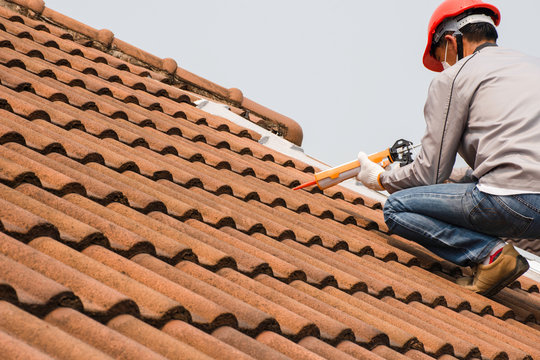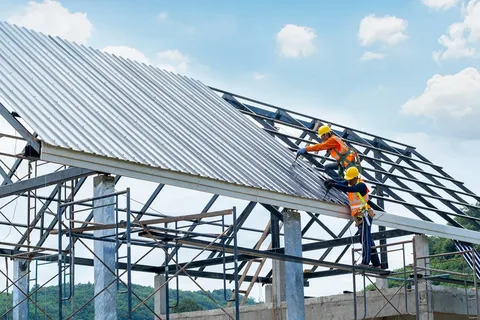Introduction
Your roof shields you day in and day out from the elements and provides structural integrity to your home.
Even the sturdiest of the roofs undergo weather related damage and issues arise with time. The most common roofing problems include water damage, damaged shingles, clogged gutters, damaged flashing, and pooling water. Ventilation issues, pest problems, and tree damage are also common and can deteriorate your structure. Proper roof installation and regular maintenance can help you spot any damage and fix it early on before it escalates into costly roof repairs.
Don’t Let Your Shield Fall Apart: Identify and Fix Common Roofing Problems Today
Recent industry reports indicate that an estimated 38% (4 in 10) of US homes have poor to moderate roofing conditions, meaning there are over 40 million homes at risk of leaks, storm damage and structural collapse. Your roof is one of the key investments and failing to care for and maintain it will lead to substantial damage. Don’t avoid your roofing responsibility. Fix the issues while they are manageable before you regret your negligence.
| Important fact An eye opening report by the Hanover Insurance Group states that nearly 60% of homeowners did not check their roof for any type of damage between Feb 2023 and Feb 2024, with Midwesterners faring the worst. |
Read on to understand the most common roofing problems and what you can do to fix them.
- Leaks and Water Damage
You must have noticed missing shingles on your roof after a storm. This is a telltale sign of structural deterioration. Cracked, warped or missing shingles expose your underlayment to the mercy of the elements. Even a popped out nail or roof fastener is enough to let the water penetrate your roofing material and make its way to structural rot.
- To fix it, be vigilant. Check your roof after every storm and perform regular cleaning and maintenance. Look for watermarks on walls and ceilings. Schedule annual inspections and consider replacement if the roof is nearing its age or the damage is extensive.
| Fast Fact Leaks are the most commonly reported issue affecting more than 6 million US homes nationwide. |
- Cracked or Warped Shingles
Constant UV exposure, age and storm damage can shorten your shingles’ life. Even a minor crack if left unaddressed, can compromise your roof’s and your home’s safety.
- To fix it, visually inspect your roof frequently from the ground using binoculars to identify any issues in time. Perform cleaning and simple maintenance tasks every three months.
- Clogged Gutters
If your gutters and downspouts are clogged due to leaves and debris, this can result in costly structural damage.
- To fix this, regularly clean your gutters and downspouts to prevent blockages and ensure proper drainage.
- Damaged Flashing
The metal strip around your chimneys, skylights, roof edge or vents makes your structure water tight. A degraded flashing can lead to water intrusion, causing costly damage.
- To fix this issue, regularly inspect your roof and look for signs of flashing failures. Hire a credible roofing service if the damage is due to age or improper installation.
- Pooling Water
This is common on flat roofs. Pooling water in sunken areas can cause significant damage, including rot, mold and mildew growth.
- To fix this, regularly inspect and clean your roof of all debris. Apply sealants to enhance water resistance.
- Ventilation Issues
If your ventilation is not proper, moisture buildup inside the home will deteriorate your structure and the roof, and will cause issues with insulation and your home’s energy efficiency.
- To fix this, seek professional advice on whether your ventilation is up to standard and get it repaired to avoid structural damage and energy loss.
| Did you know? According to the US Census Bureau’s American Community Survey, around 60% of owner occupied homes nation wide were built before 1980, with Detroit and Philadelphia featuring some of the oldest roofs and structures. |
- Tree Damage
Overgrown branches from the nearby trees can degrade your roof surface, especially during storms.
- To fix this, trim your trees to avoid abrasion and prevent impact related damage during storms.
- Pest Problems
If your home has a pest infestation, this can cause some serious roofing and chimney damage, even exposing you to carbon monoxide and smoke buildup inside your home.
- To fix this, address the pest issues and schedule an inspection to understand the damage caused by the critters for timely repairs.
- Faulty Installation
Poor installation by unskilled workers can lead to a host of problems from the beginning, leading to premature aging of the roof.
- Hire credible roofers for installation instead of trying to save a little upfront to prevent costly repairs down the line.
- Lack of Maintenance
Ignoring regular inspection and roof maintenance can turn small problems into costly repairs.
- To strengthen your roof and extend its life, schedule at least one annual inspection. This will help you address any problem timely and prevent extensive roof and property damage.
Conclusion
Understanding the common roofing problems helps identify signs and address issues that can compromise the safety of your home. To prevent costly repairs, it’s essential to inspect and maintain your roof regularly and ensure timely repairs. A properly installed and maintained roof can improve energy efficiency and curb appeal and keep on protecting your structure for years to come.
FAQs
What is the benefit of drone footage in finding roofing problems?
Drone footage eliminates the risks of tripping, accidental touching of overhead power lines or dangers associated with walking over a weak roof that can fall at any minute.
What are asphalt shingles made up of?
The most popular roofing material, asphalt shingles is made up of fiberglass or paper mat covered in tar or granules.
What is the weakest part of my roof?
The trim along the roof edge is the weakest component of your roof and is prone to warping and corrosion. It needs to be regularly checked to keep your structure protected.


